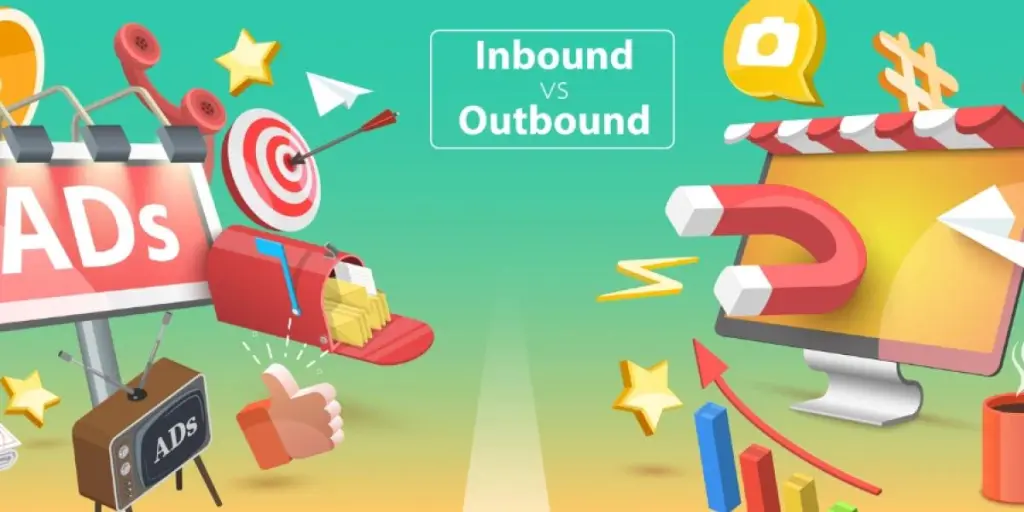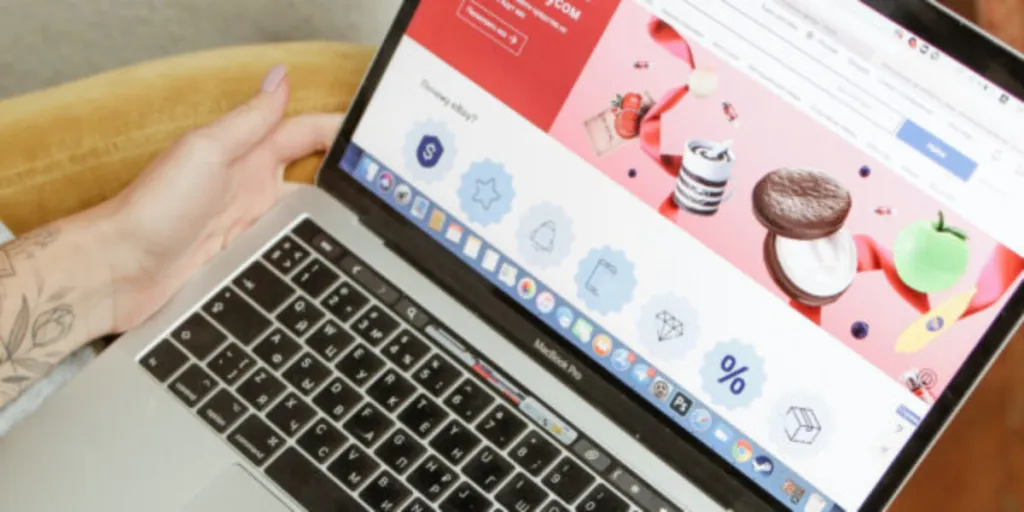It’s a common myth that cross-selling and upselling are pushy marketing tactics used to trick customers into spending more.
When used right, these strategies can enhance customer experience and build long-term relationships. The key is to have the customer’s interests in mind.
By providing value, you can create a memorable shopping experience for your customers. The added revenue will then come as a result.
This article discusses upselling vs. cross-selling in detail. It outlines their key differences, best practices, and how to implement them.
What is cross-selling?
Cross-selling is the practice of recommending items related to a product that a customer has recently purchased. They are of relevance to the customer and increase business revenue. For example, a retailer selling laptops may cross-sell a laptop bag or a wireless mouse. A clothing store may cross-sell gloves when someone purchases a scarf.
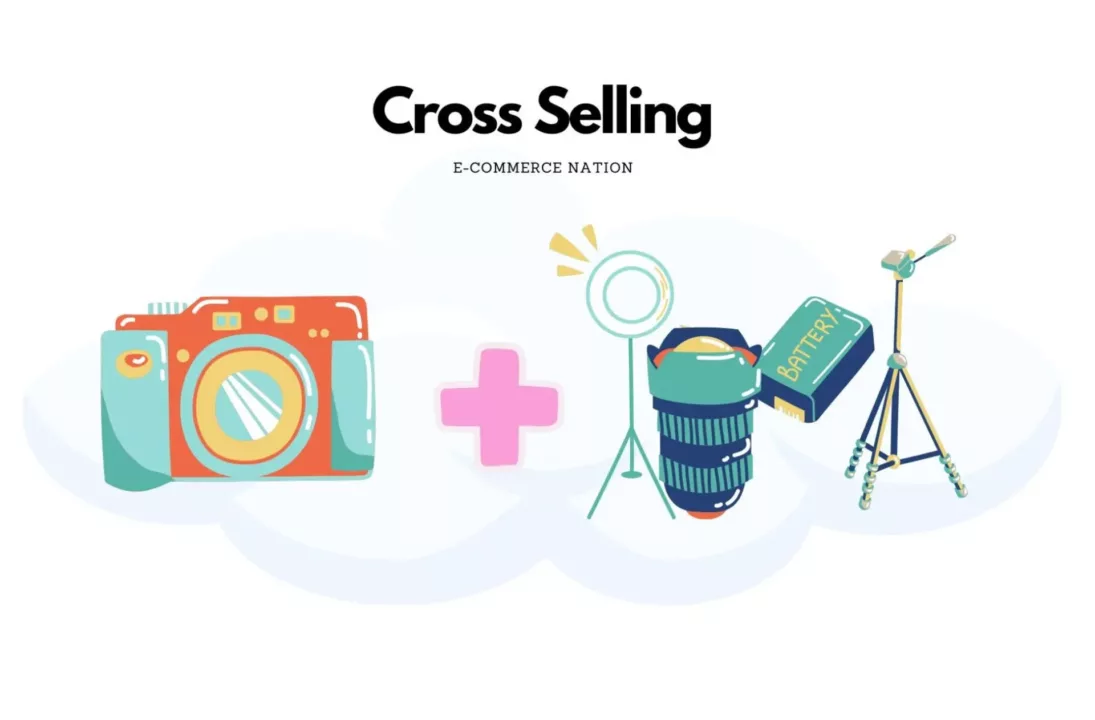
In ecommerce, you can cross-sell:
- During checkout
- By recommending items on product pages
- On post-purchase emails
Here’s why you need a solid cross-selling strategy:
- Cross-selling encourages repeat purchases and promotes customer loyalty
- It’s a great way to showcase items in your product catalog to customers. This brings their attention to items they may need but didn’t know you have.
- Strategically placing items on your product pages increases your revenue per sale.
Although used interchangeably, upselling and cross-selling are different practices. This next section discusses upselling to help you distinguish the two.
What is upselling?
Upselling is when businesses encourage customers to spend more money on their current purchases. This could be a more expensive version of the item, or adding additional features to it. The aim is to provide value for the customer whilst at the same time boosting your sales revenue.
Upselling isn’t only about encouraging customers to spend more. It also introduces customers to better versions of a product that they did not know existed.
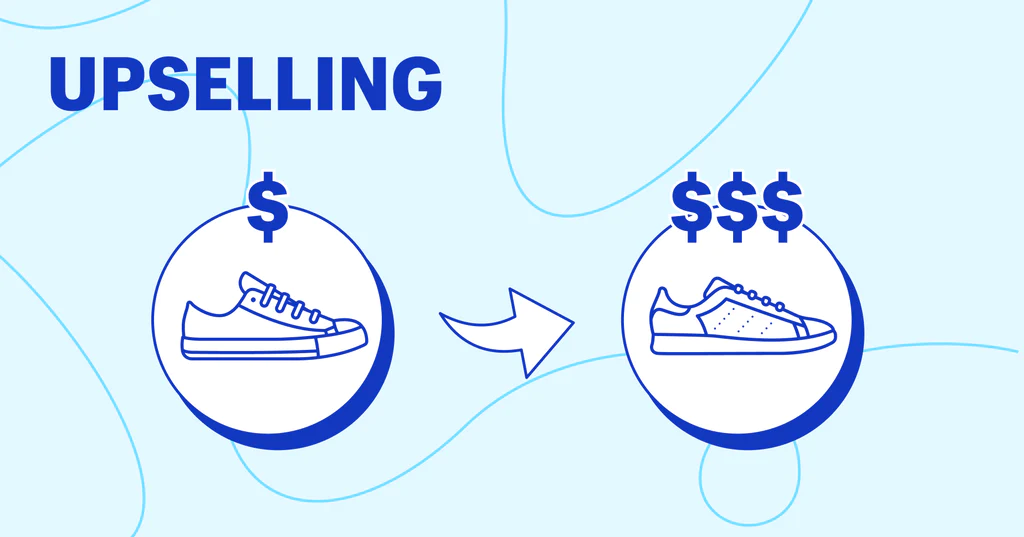
For example, you can suggest a more advanced laptop with better specs. Here, you’ll be asking the customer to choose the upgrade over their initial product.
Distinguishing cross-selling from upselling
Both strategies achieve similar goals. They increase the order value and improve your ROI. However, some key differences between upselling and cross-selling set them apart.
Key differences
Here are some key differences between cross-selling vs. upselling.
- Concept: The key difference between cross-selling and upselling is their core concept. Cross-selling encourages customers to add products to their cart that complement their original orders.
Conversely, upselling suggests they upgrade their order by opting for a better or more expensive option.
As such, upselling increases the value of a single purchase and focuses on a single product. Cross-selling focuses on more items to increase the value of the entire order.
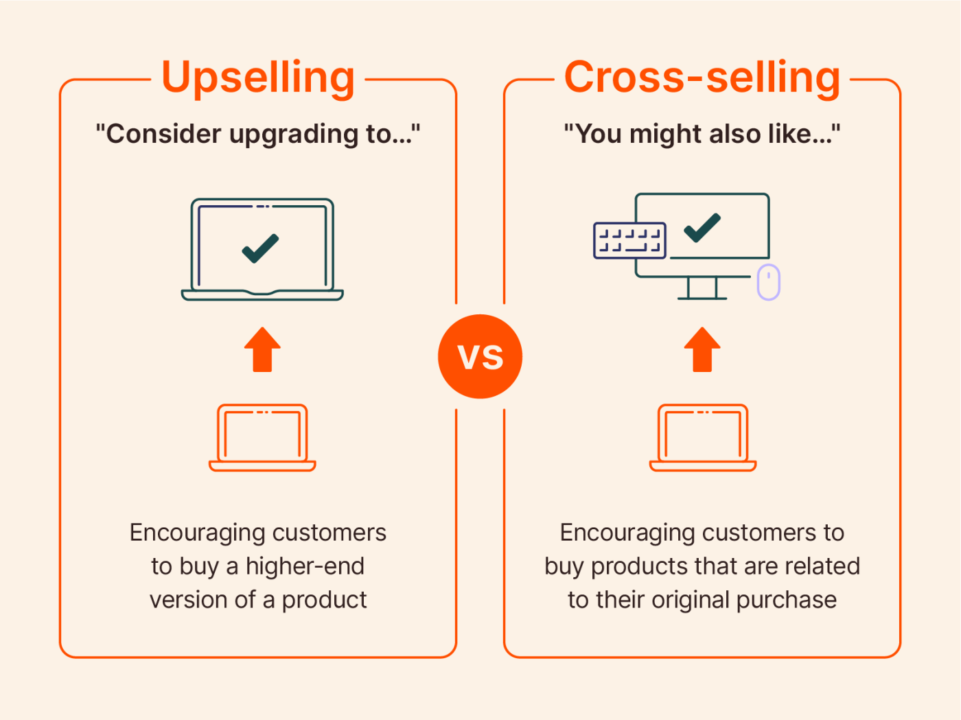
- Intention: Cross-selling introduces the customer to products they perhaps did not intend to buy but may make their order more satisfactory.
Upselling considers the product the customer intended to buy and suggests an upgrade.
- Level of expertise: Upselling is generally a much easier strategy to execute. This is because the customer has already shown interest in the product.
Cross-selling requires knowing what else would benefit your customers. This is easier if you have expertise, otherwise it can be more challenging to find appropriate recommendations and persuade your buyers that they need these items.
Similarities and overlaps
Both cross-selling and upselling aim to provide value to customers while increasing revenue for the brand. They’re both beneficial to your business as well as the customers.
If done right, upselling and cross-selling can be the easiest and most economical ways to boost sales. According to a recent report by HubSpot, 91% of sales pros upsell while 87% cross-sell. They say it brings an average of 21% of company revenue.
Both strategies also help to build customer loyalty and encourage return purchases.
Implementing cross-selling and upselling in your business
The key with cross-selling vs. upselling is to always provide value for the customer. Here’s how to make sure you do so.
Get familiar with your customer base
Knowing your customers is essential when upselling and cross-selling. This includes understanding their demographics, personal attributes, and overall experience with your brand.
You can then use these metrics to segment your customer base. Segmentation helps you personalize your cross-selling and upselling efforts with ease.
Some ways to familiarize yourself with your customers include:
- Responding to their queries
- Sending them surveys and feedback requests
- Engaging them consistently throughout their buying journey, e.g. through email marketing
Map the customer journey
This practice involves tracking your customers’ engagement with your brand. From when they initially showed interest to when they became repeat customers.
Your customer journey helps you record:
- Customer purchasing activities
- Browsing history
- Search history
- Customer preferences, etc.
This data helps you make more personalized recommendations. As a result, the customer will have a better shopping experience and be more likely to buy from you.
Identify products that solve problems
As mentioned, it’s important to focus on providing value to your customers. As such, you want to recommend products that will meet your customers’ needs.
The goal is to build long-term relationships with them.
For example, only recommend products that are useful to the original item—such as suggesting a pen when someone buys a journal.
Or, only suggest products that are a reasonable upgrade. This means keeping everything within the customer’s budget and needs.
Establish your cross-selling and upselling techniques
This involves knowing when and how to use cross-sell vs upsell practices in your business. For instance, whether to use them together or separately or how often to use product bundling, etc.
From there, you can run A/B tests and choose the most effective techniques.
Pros and cons of cross-selling and upselling
Like any other strategy, upselling and cross-selling have their benefits and drawbacks.
Benefits of cross-selling and upselling
Here are some of the benefits.
- Increasing income: Both upselling and cross-selling increase your business revenue. They encourage customers to either pay more or buy more.
- Building customer relationships: Both methods help you establish the groundwork for a long-term engagement. This is because you provide value to your customers, and they are more likely to trust your brand as a result and keep coming back.
- Increasing customer lifetime value: Building a relationship with your customers ensures they buy from you over a long time. This in turn increases their lifetime value.
- Providing convenience: If done right, upselling and cross-selling can enhance your customers’ shopping experience. For instance, suggesting products to customers saves time.
Suggesting relevant cross-sells and upsells also adds value to your customer’s purchases. All these contribute to their overall experience with your brand.
Potential drawbacks and how to avoid them
While it may seem easy, upselling and cross-selling can come with their own sets of challenges. These include.
- Customers may feel pressured to buy products. This is especially true if they feel overwhelmed with your upsell suggestions.
You can avoid this by focusing on the value you provide for customers and only upselling when it makes sense. Use data on customer behavior to recommend relevant upsells and cross-sells.
- Decision overload can occur. When you present customers with too many options, they can lose interest.
It helps to narrow the customers’ choices down as we’ll discuss later. Or, you can use product bundling to reduce decision paralysis.
You could also personalize your product recommendations. This ensures that they’re relevant to the target audience.
Mastering the art of cross-selling and upselling
Here are some proven strategies to help you master cross-selling and upselling.
Narrow the choices
Recommending products to customers can offer them more choices. But too much of it can also be ineffective. It may lead to decision paralysis or, worse still, be a distraction that leads them to abandon their carts.
As such, it’s crucial to limit the choices you present to customers.
Only pick the most relevant upgrades or related items so they can easily choose. And if customers ignore your suggestions, avoid pushing them further.
Reduce decision complexity through bundling
Bundling is selling related products together to increase the value of an order. It’s one way of simplifying the upselling and cross-selling strategy.
Product bundles are often sold at a discounted price to urge customers to make the purchase.
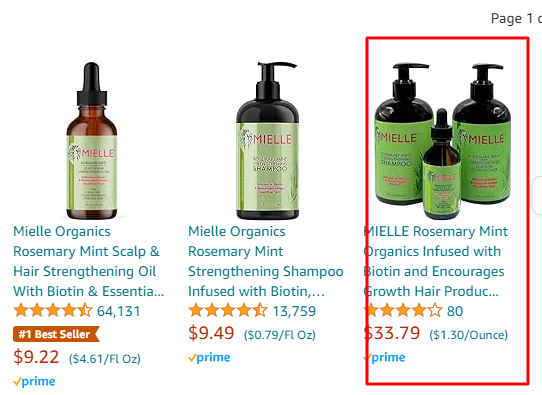
It’s a great tactic to use together with your cross-selling strategy. This offers your customers flexibility. They can choose what to add to their order or pick a bundle if they face decision complexity.
Leverage price-anchoring and value-adding strategies
Price anchoring is a psychological concept that states that people’s decisions are highly impacted by the first piece of information they receive.
As a marketing policy, a buyer’s decision is influenced by the price they see first. This is called the anchor price. If used right, price anchoring can help you influence how your customers see your prices.
It can also help make them seem more discounted or make the product seem more valuable. You can leverage this strategy to upsell or cross-sell your products.
For instance, you can include retail prices and cross them out. Then, show your cheaper price that provides the same value.
Here’s an example of how that would look like on your product pages.
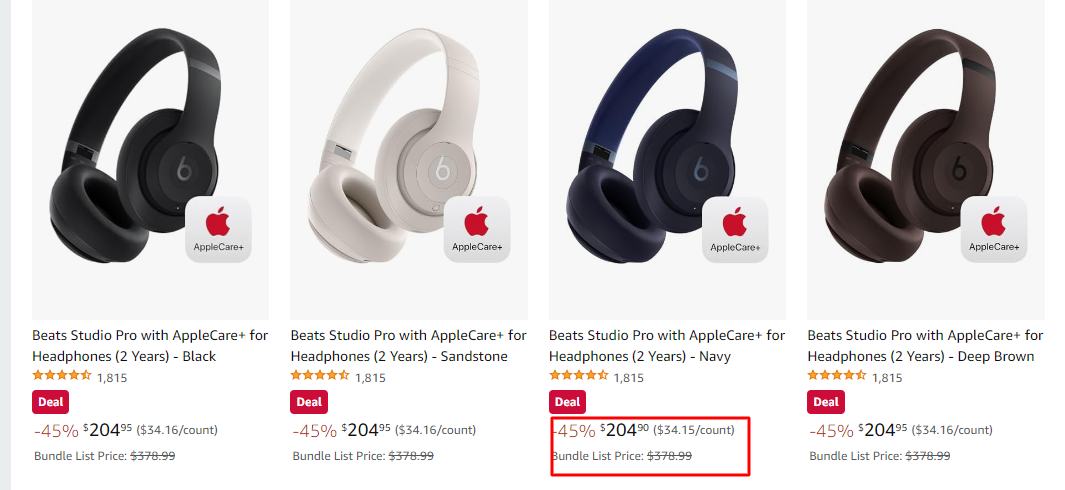
Using email marketing for cross-selling and upselling
As mentioned earlier, upselling and cross-selling efforts are not limited to product pages or the checkout.
Here are some email marketing examples you can use to upsell and cross-sell products:
- With your welcome and thank you email series
- As part of an order confirmation email
- In a cart abandonment email
- As part of your promotional emails
Some examples of cross-selling and upselling scenarios include:
- Offering free shipping for your upsells
- Sending an upsell email series with testimonials of customers who have used recommended products
- Send a recently purchased email and include related products along with it
- Include CTAs with your upsell and cross-sell emails so your customers can take action
Email marketing tools make it easy to automate cross-sell and upsell campaigns.
Omnisend for instance lets you:
- Craft attractive email campaigns
- Pull products directly from your store into your email
- Send automated cart abandonment emails, all with plenty of cross-sell and upsell opportunities
The platform further offers a product recommender feature. This helps you make personalized suggestions based on your audience’s interests.
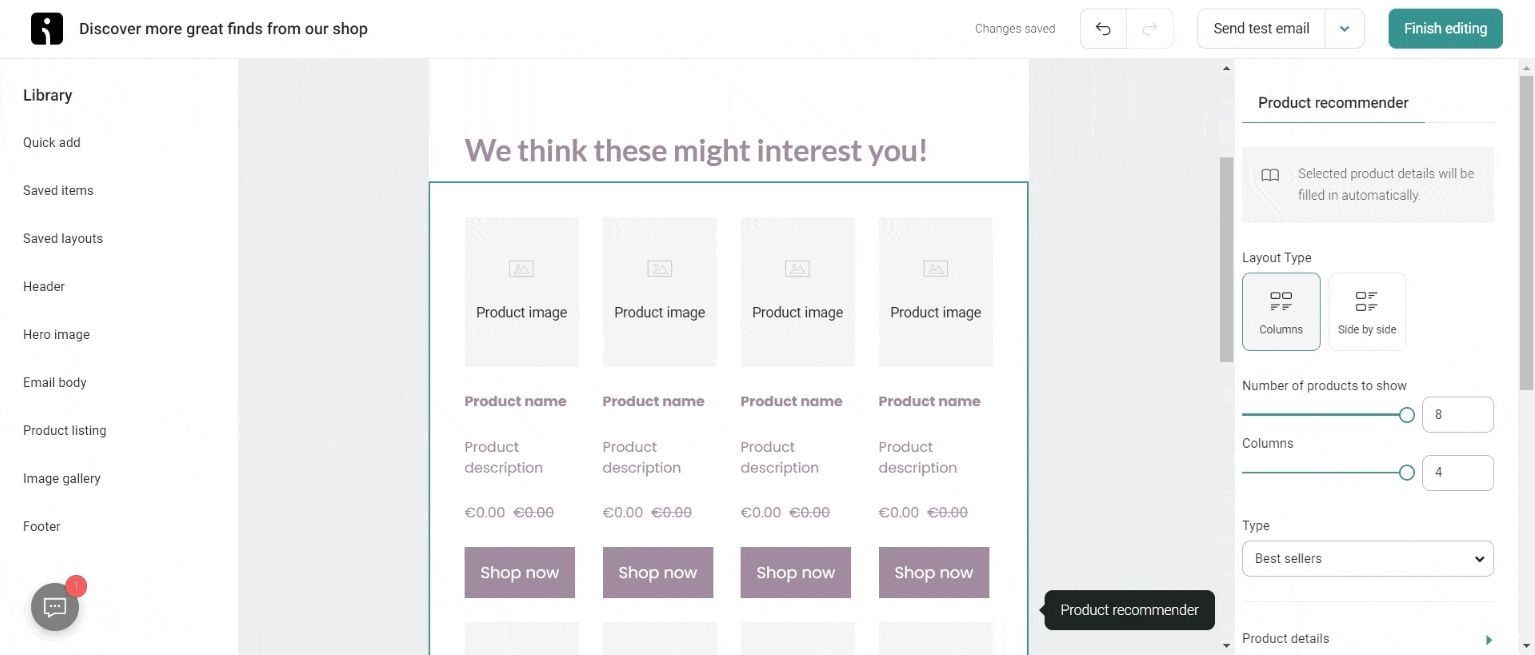
Upselling vs cross-selling: Wrap up
Upselling and cross-selling are great ways to boost sales from your existing customer base. But your strategy can only be effective if done right.
This involves sending personalized recommendations, the right timing, product bundling, effective messaging, and so on.
The right ecommerce email marketing software can help you automate the process, helping you make sales on autopilot.
Source from Omnisend
Disclaimer: The information set forth above is provided by omnisend.com independently of Alibaba.com. Alibaba.com makes no representation and warranties as to the quality and reliability of the seller and products.




